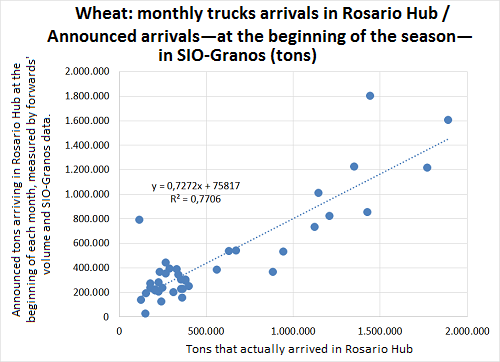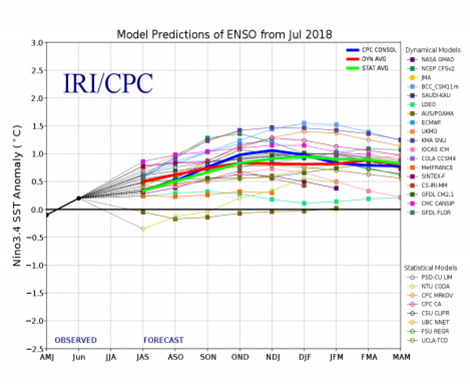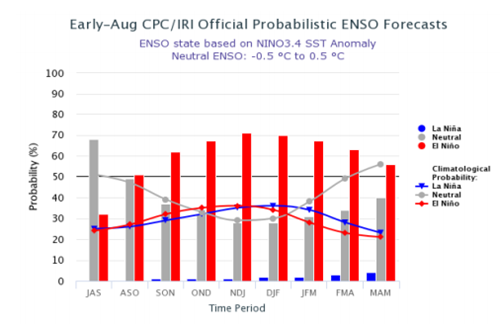Wheat local prices fell between US$ 1/t and US$ 0.2/t in a week, taking as reference MATba (Buenos Aires Futures Market) December to February deferred positions (from Thursday the 16th to Thursday the 23th) following the international drop of the cereal. The fall in even sharper, between US$ 5.5/t and US$ 6.5/t, if we consider the peaks registered on Friday the 17th. In foreign markets, however, the price for Argentine wheat increased during the last week, which shows a better performance of Argentine wheat price compared to the rest of the world. Despite the drop in the local price, the volume negotiated this week was much higher than last week, totaling more than 100 thousand tons of November to March forwards with delivery in Rosario (during one-week period, from Friday the 17th to Thursday the 23rd). This value is much higher than last week, especially when considering that Monday was a holyday in Argentina.
New wheat crop's commercialization data is very promising, to the point that if this pace of activity continues to the harvest it may have a negative impact on logistics, mainly over the month of December. According to SIO-Granos data to date, 1.2 MT of wheat are expected from December 2018 on, by the same date last year this value was around one million tons, while in 2016 it represented only 350 thousand tons. SIO-Grains offers a record of the trucks that enter the Rosario Hub. The greater number of trucks expected comes not only from a larger wheat crop, but also from an unprecedented rhythm of transactions. By August 15, the export forwards are of 5.22 MT, which is equivalent to 25% of the current year's expected harvest. At the same time, committed export sales reach 4.8 MT, in other words, exporters have sold almost all the volume they expect to receive from December of this year.
Wheat spot price at Rosario's Board of Trade was US$ 215.5/t on Thursday the 23rd, following several weeks of little negotiation. The average daily volume of transactions in the spot market fell in the last week to 4 thousand tons, while the total negotiated volume barely exceeded 16.5 thousand tons. Next harvest FOB price at Argentine ports was the exception to the fall of wheat prices in the main international markets, according to the Ministry of Agribusiness. This implies a greater interest of the external demand on Argentine next wheat crop. The development of local wheat production Wheat cultivation in Argentina's core region is finishing the tillering, almost entering the stem extension stage. Despite the frequent frosts, the crops maintain good physiological condition and present no major damage beyond small burnings on the leaves. As for the soil's moisture, the crop still does not show a deficit of humidity, although drizzles are needed for the nitrogen fertilizers to be incorporate into the soil and to be absorbed by the plant. Water reserves are suitable to maintain the tillers, though during the stem extension stage the crop will demand more water. In the north of the country, however, wheat is already in reproductive stages without sufficient moisture, which will have an impact on the yields.
Unfortunately, short-term forecasts do not predict rainfall in the central region, though ENSO phenomenon will appear in the medium term. As shown in the following graph, according to the NOAA (National Oceanic and Atmospheric Administration) the chances of occurrence of El Niño phenomenon are 70% during the months of August-October. This implies precipitations above the historical average that would reestablish moisture during the crop's most water-demanding period, and will be essential in order to face the sowing of summer crops.



